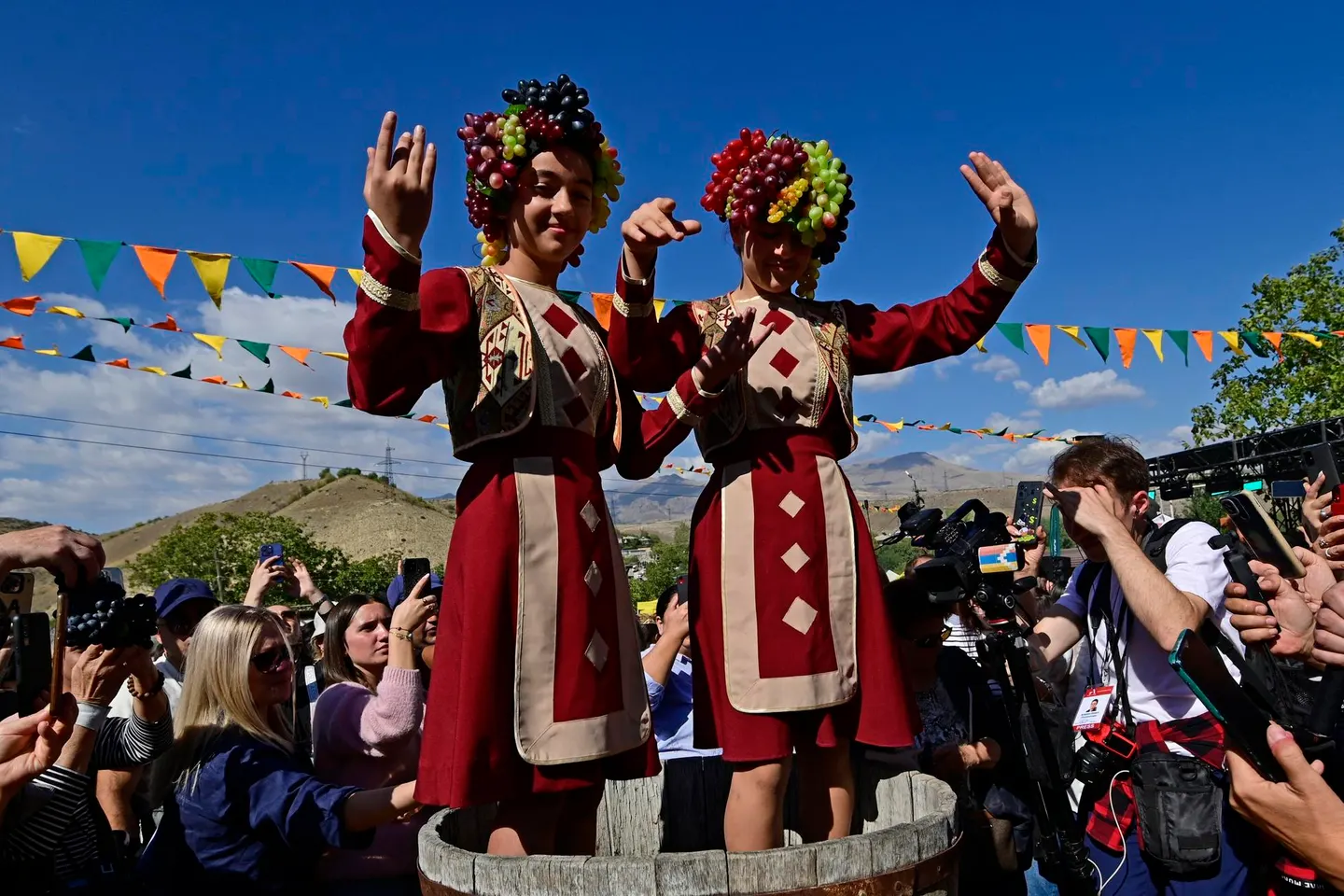Forbes has dedicated a feature to Armenian winemaking, calling the country “the new crown holder in the debate over the birthplace of wine,” writes Forbes journalist Layne Randolph.
The article traces Armenia’s 6,000-year wine story from the Areni-1 cave — the world’s oldest known winery, dating back 6,100 years — to today’s revival of indigenous grapes like Areni, Voskehat, and Khatouni. Randolph emphasizes how Armenia’s ancient legacy is now being reshaped into a global future, with exports more than doubling over the past decade and bottles reaching shelves from Paris to Los Angeles.
For much of the 20th century, however, Armenia’s vineyards were redirected toward brandy production under Soviet rule, creating a spirit so iconic that Winston Churchill famously received 400 bottles of ARARAT Brandy annually from Joseph Stalin after the 1945 Yalta Conference. That reputation stuck, branding Armenia as “brandy country.” But as Forbes notes, Armenia’s true legacy lies in wine — and it is reclaiming that crown today.
Unearthing the World’s Oldest Winery
The Areni-1 cave complex in Vayots Dzor, discovered in 2007, offered archaeologists the earliest complete winemaking setup ever found. Excavations revealed a clay press draining into a fermentation vat, storage jars half-buried for temperature control, grape seeds, skins, and even pottery shards stained with the red pigment malvidin.
“For the first time, we have a complete archaeological picture of wine production dating back 6,100 years,” said archaeologist Gregory Areshian, co-director of the dig. The site even yielded the world’s oldest leather shoe, underscoring its time-capsule significance.
Forbes noted that unlike its neighbors Georgia & Turkey, Armenia can point to a single excavated site, the Areni-1 cave in its Vayots Dzor province, with a press, a vat & grape DNA, neatly tying its 6,100-year-old winemaking past to the present. The fact that those seeds were Areni — still cultivated today — gives Armenia’s claim unusual continuity.
From the Bible to the Silk Road
Scripture itself links Armenia to wine: Noah’s Ark is said to have landed on the Mountains of Ararat, where he planted grape seeds. By the 4th century, Armenia became the first nation to adopt Christianity as a state religion, and monastic winemaking thrived.
Armenian wine traveled the Silk Road, where merchants were known for cultivating and blending vintages carried in amphorae and wineskins, making Armenia a gateway for wine’s spread across Europe and Asia.
Armenia’s Winemakers Today
Forbes highlights the new generation of Armenian winemakers who are reviving old methods and pushing new boundaries:
- Trinity Canyon Vineyards – Near Areni-1, leaning into terracotta vessels and indigenous grapes.
- Zorah Wines – Aging Areni in buried karases, winning international acclaim.
- InVino (Mariam Saghatelyan) – Opened Armenia’s first wine bar in 2012, building Yerevan’s wine culture.
- Gevorkian Winery – Pioneering pét-nats, pomegranate wines, and reviving ancient kakhani techniques.
- Krya – Restoring neglected old vines in Vayots Dzor, preserving heritage fruit.
- Yacoubian-Hobbs (Paul Hobbs & Viken Yacoubian) – Combining international expertise with Armenian terroir, exporting wines directly to U.S. markets.
These players, Randolph writes, are ensuring Armenia’s comeback has not just a headline, but a marketplace and a future.
A Future Written in Ancient Vines
The past may have given Armenia the world’s oldest winery, but its modern producers are making sure the story continues. Exports have surged, Armenian wines are now sold in more than 30 countries, and international acclaim continues to grow.
“Armenia will always be proud of the brandy that once charmed Churchill,” Randolph concludes. “But its wine story—anchored in a cave older than the pyramids—is what it wants the world to remember now.”


